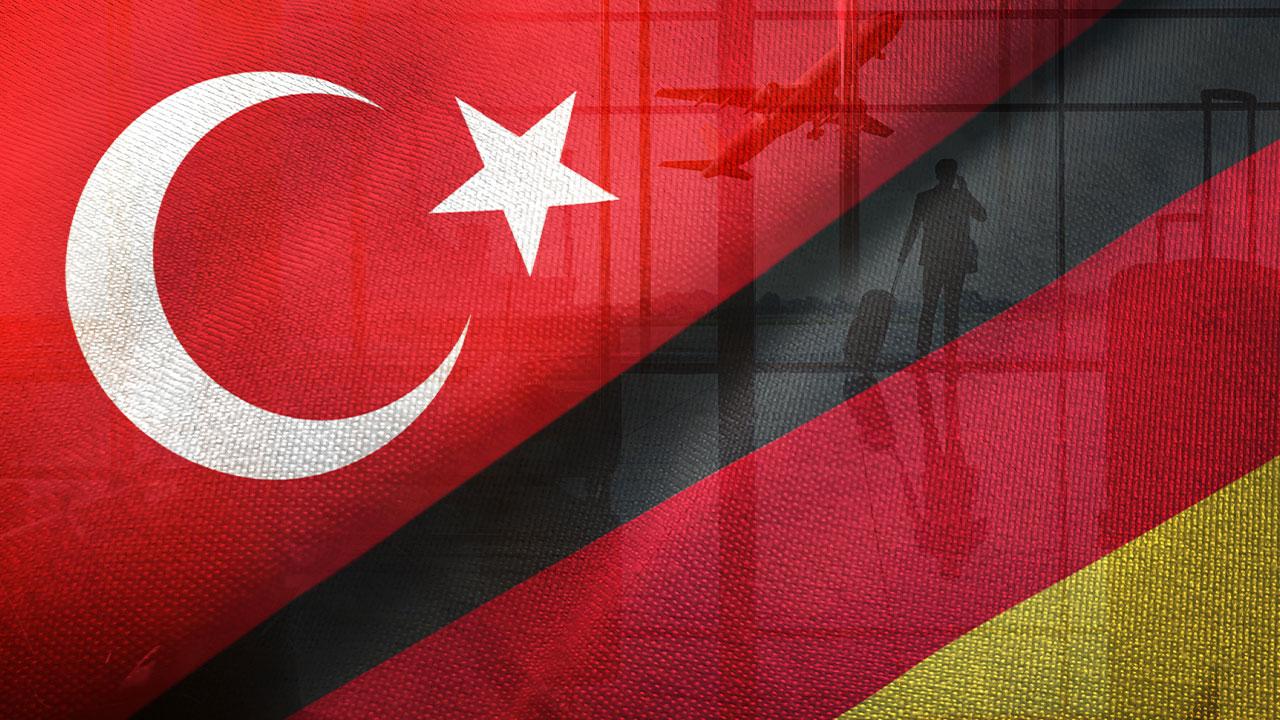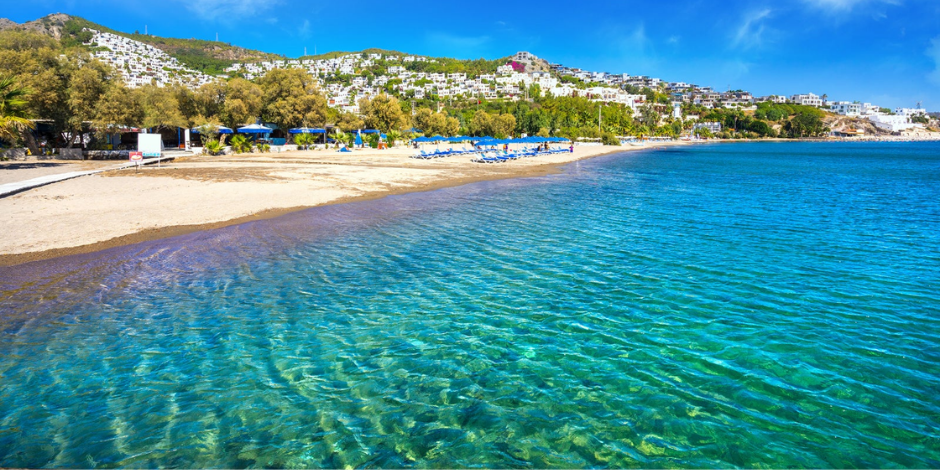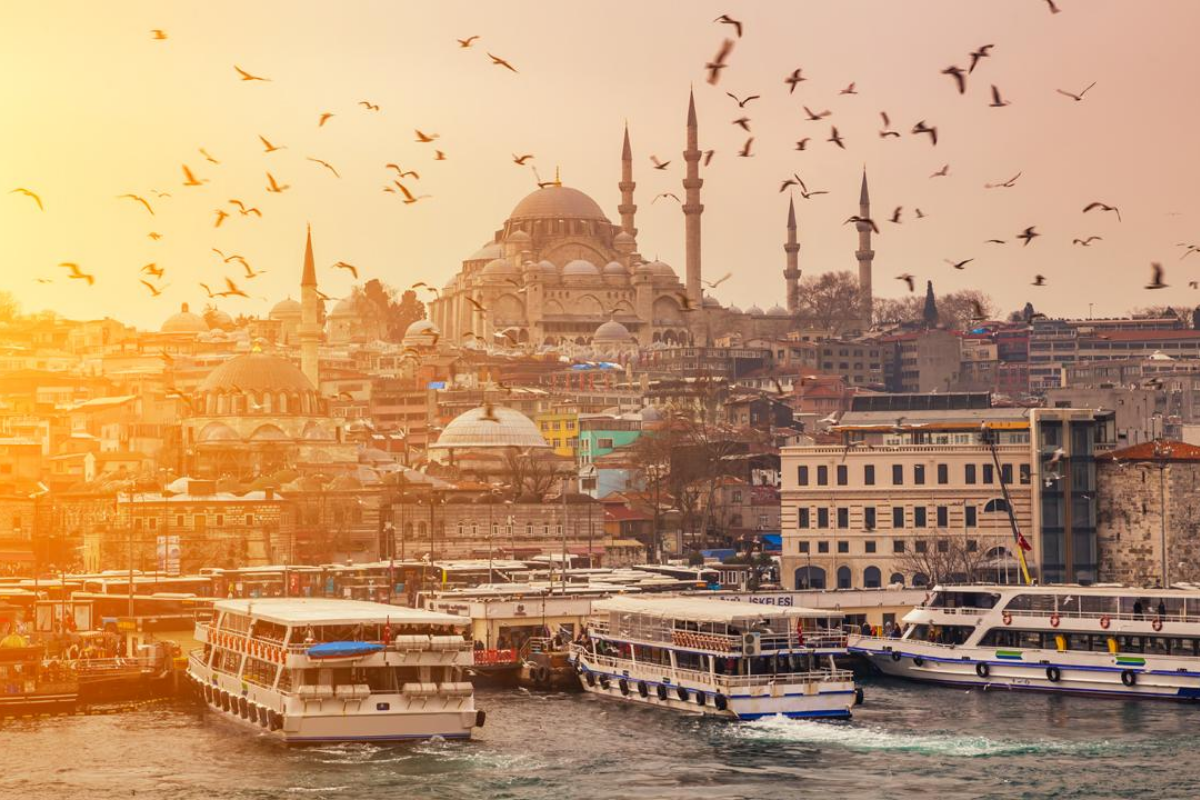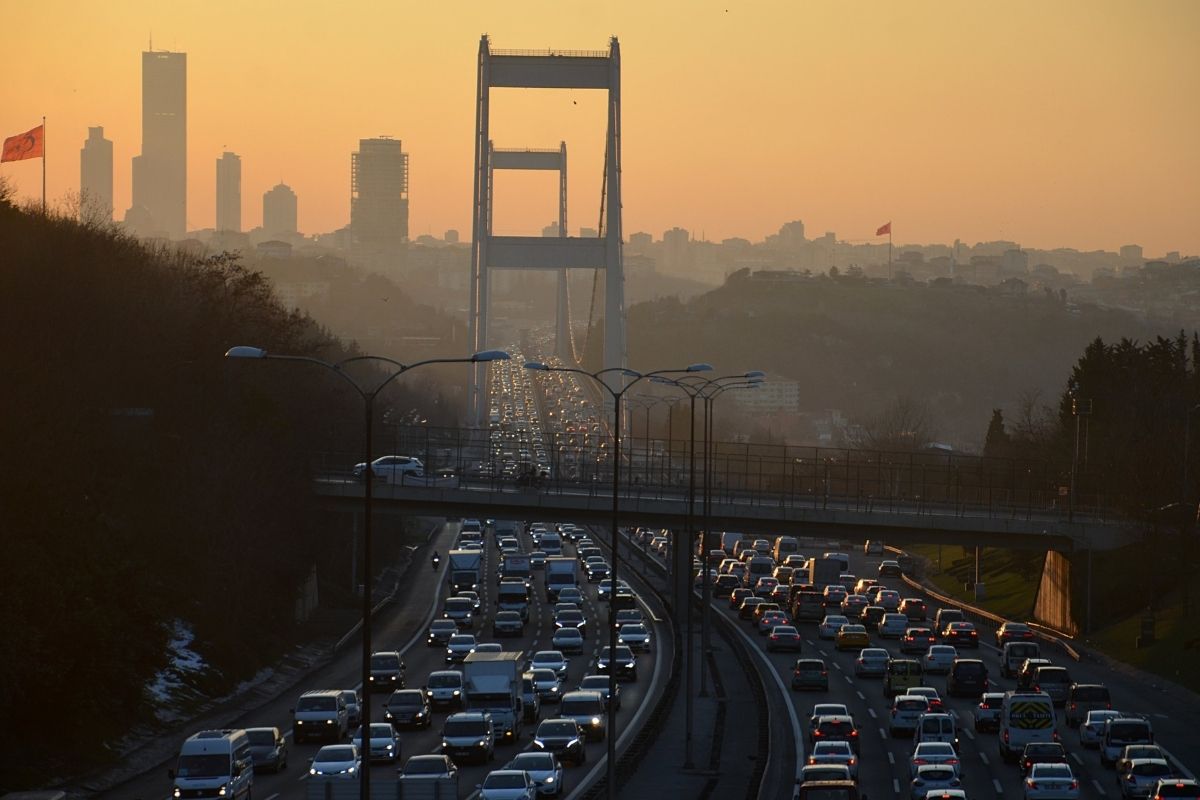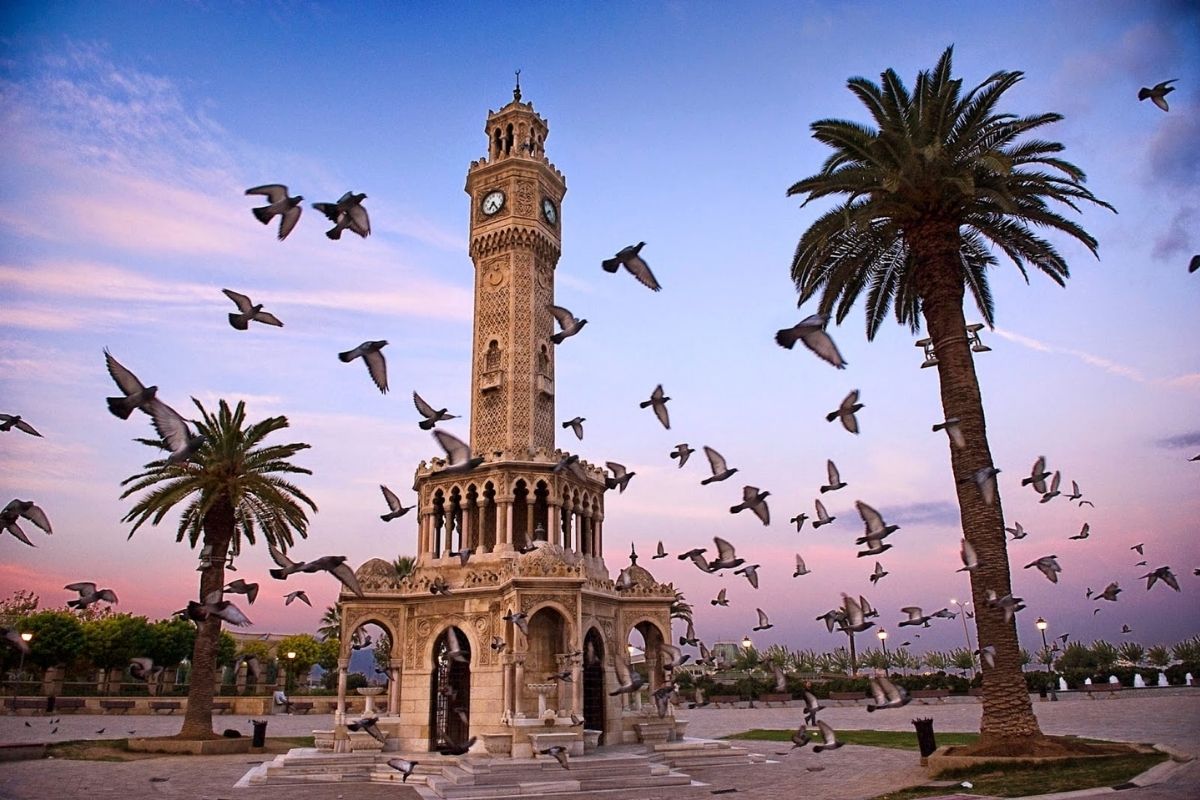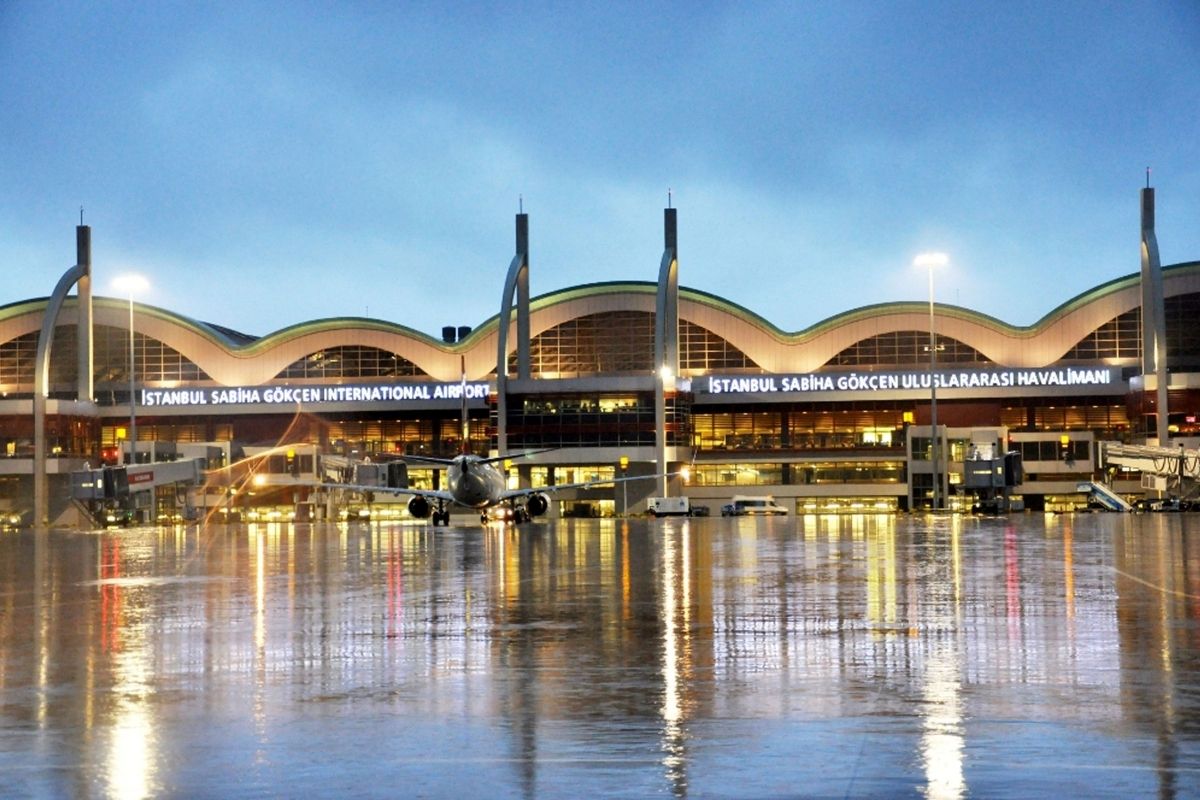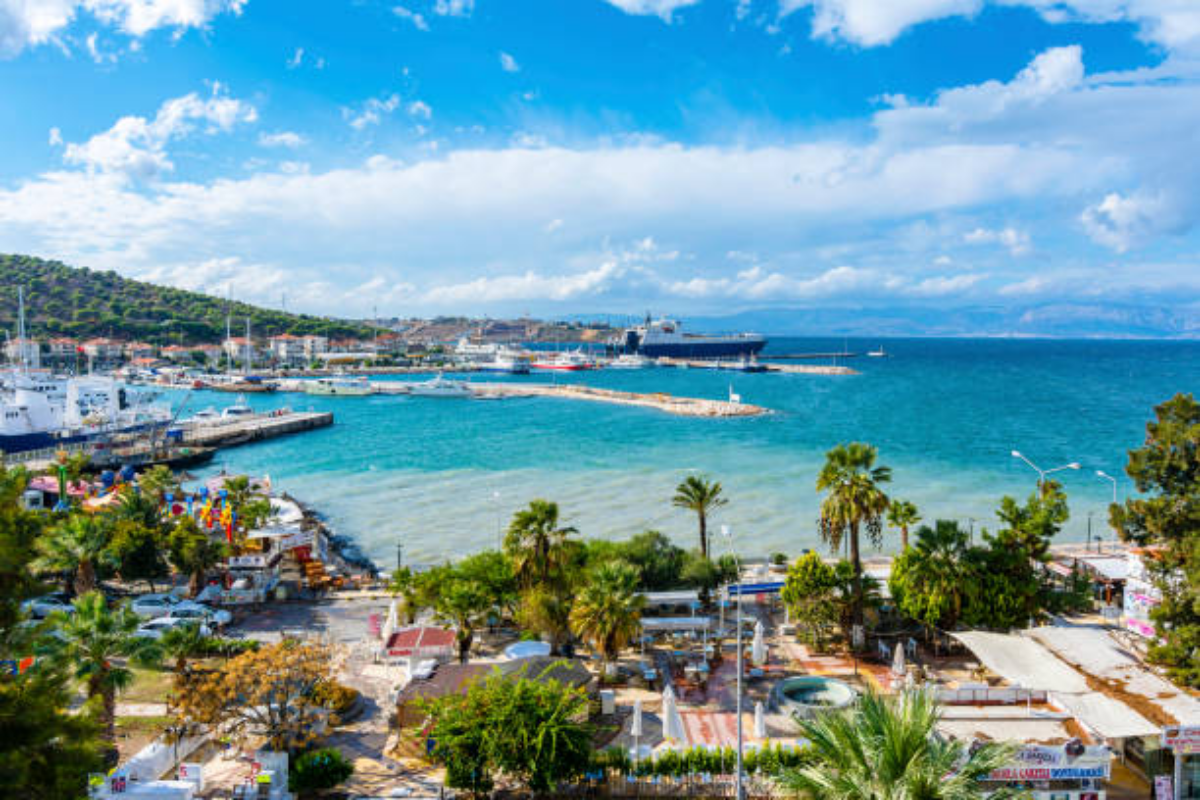Places to Visit in Istanbul
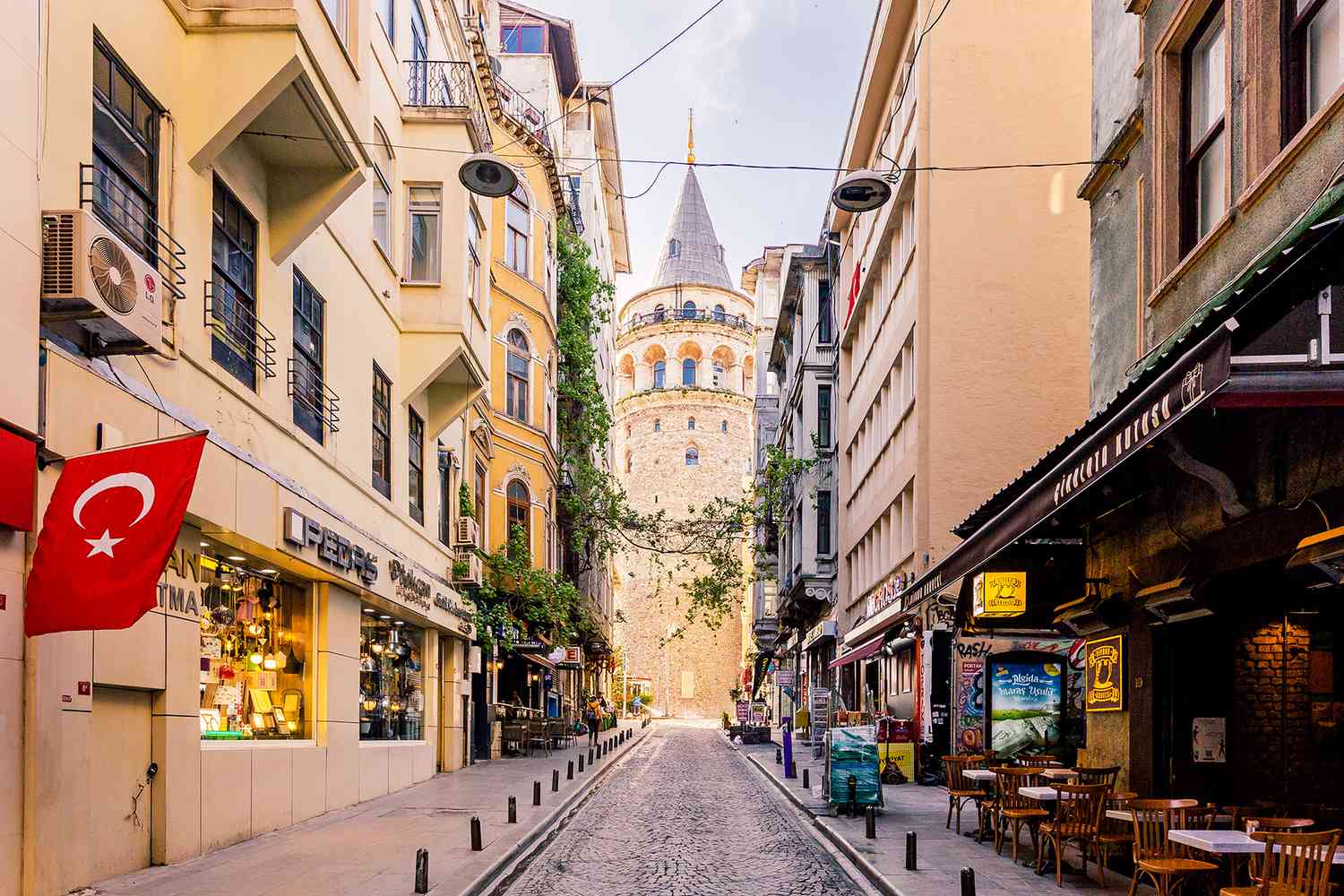
Places to Visit in Istanbul
Istanbul, one of the most important cities in the world for approximately 16 centuries, has been ruled by many different civilizations. Dozens of historical artifacts in the city, which bears the traces of all the civilizations it has hosted on its land, have turned Istanbul into a museum in itself. There are countless places to see in Istanbul, where you can find a different beauty in every district. Many natural and historical monuments, including palaces, mosques, museums, parks and gardens, are among the places worth seeing.
If you want to see every point of Istanbul, you are on the right list. We have listed the most popular ones to make your visit to Istanbul easier.
Sultan Ahmet Mosque and Square
Sultan Ahmet Mosque, built by the Ottoman Sultan Sultan Ahmet I, is one of the most important and magnificent works of Turkey and Istanbul. It was nicknamed the "Blue Mosque" by tourists due to the predominantly blue appearance of the Iznik tiles used in the mosque, which was completed in 1616.
Sultan Ahmet Mosque is located opposite Hagia Sophia. The work of architect Sedefkar Mehmet Ağa is one of the best examples of classical Ottoman architecture. Sultan Ahmet Mosque, which is visited by millions of visitors throughout the year, especially during Ramadan, is one of the most important symbolic works of the historical peninsula.
The 2500-year-old historical square, where castle festivals and weddings, Janissary uprisings and rallies were held, fascinates those who see it with its magnificence and takes them on a historical journey from past to present.
miniaturk
Miniatürk is a model park that collects the beautiful works of the Ottoman Empire and the Republic of Turkey in an area of 60,000 square meters in Istanbul. The park, consisting of 122 different works, is the largest model museum in the world.
There are many details in the region such as pools, small shopping malls, amphitheater, parking lot and playgrounds. Miniaturk Open Air Museum is open all year round. There is also a parking lot.
In addition, the Crystal Istanbul Museum, located in Miniatürk, is the world's first crystal museum and 16 rare works such as the Galata Tower, Izmir Clock Tower and Hagia Sophia were created by turning them into crystal-like glass with a special technique.
The Hagia Sophia Mosque
Hagia Sophia Mosque is one of the most admirable historical heritages of Istanbul and the world. It is one of the most important cultural and historical monuments in the historical peninsula. The work, built by Byzantine Emperor Justinianus in 537, was used as a church for 916 years. It was found in Byzantium and served as a mosque for 482 years since the conquest of Istanbul in 1453.
Hagia Sophia, which served as a "museum" from 1935 to 2020, was used as a mosque again after this date. Drawing attention with its elegance inside and out, Hagia Sophia is one of the most important religious and cultural buildings in the world.
Topkapi Palace Museum
Topkapi Palace, which best reflects the magnificence of the Ottoman Empire and was the administrative center of the world for many years, is one of the rare works brought to Istanbul by Sultan Mehmet the Conqueror. It was built in an area overlooking the Golden Horn, Marmara, Bosphorus, Üsküdar and Galata, grew over time and was re-added as needed.
Topkapi Palace, built between 1460 and 1478, was the administrative and educational center of the state, as well as the place where the sultans lived and the princes were educated. Within the palace, there are harem, endun, birun, gardens, mansions, courthouse, etc. was formed. If you want to visit today, Topkapı Palace Harem is a separate section and is paid, but consists of 4 courtyards and Bab-ı Hümayun. The palace has places to relax and buy souvenirs that can only be found in Istanbul and the Ottoman Empire.
The Egyptian Bazaar
The Spice Bazaar, visited by thousands of local and foreign people every day, was built in the second half of the 17th century by Turhan Sultan, the mother of Mehmed IV in the Ottoman Empire.
The bazaar is one of the most important historical shopping centers in Istanbul, with herbalists selling medicinal plants, Turkish honey, spice shops, dried herbs, organic foods, dried fruits and delicacies.
When you enter the Spice Bazaar, you will immediately smell the smell of spices and medicinal herbs, especially on winter days. The historical bazaar in Eminönü opens to Istanbul with side gates such as Tahtakale, Mercan and Süpürgeciler next to the two main gates. The historical bazaar has the potential to give you unforgettable moments.
Eyüp Sultan Mosque and Tomb
Eyüp Sultan Tomb and Mosque is a very special place in terms of religious tourism in Istanbul. Immediately after the conquest, the tomb of Eyüp Sultan (Khalid bin Zeyd Ebu Eyyub el-Ansari) was found by Akşemseddin, the teacher of Fatih Sultan. The first large tomb of Istanbul was built by Mehmet Dann.
Out of respect for Eyüp Sultan, the sword ceremonies of all sultans are held in the Eyüp Sultan Tomb. After the tomb of Eyüp Sultan, Fatih Sultan Mehmet III in 1458. It created a complex. During the Selim period, the mosque underwent major repairs.
Rumeli Fortress
Rumeli Fortress is a magnificent architectural work built by Fatih Sultan Mehmet before the conquest of Istanbul in 1452. Built at the narrowest point of the Bosphorus, opposite the Anatolian Fortress, the work fascinates its visitors with its 5-century-old magnificence.
Maiden's Tower
Maiden's Tower, one of the symbols of Istanbul with its 2500-year history; It is one of the most mysterious and romantic places on the Bosphorus, which has been a source of inspiration for painters, poets and writers throughout history.
The name of the tower, which occupies a very important place due to its location at the entrance of the Bosphorus, is associated with Roman and Byzantine legends. The building, which has been used as a watchtower and occasionally as a lighthouse throughout history, has become the center of attention for local and foreign tourists with its cafe and restaurant opened to visitors in 2000 after its original restoration. You can reach the Maiden's Tower by boats departing from Üsküdar Salacak.
Joshua Hill and Tomb of Prophet Joshua
Yuşa Hill, one of the areas that attract the most tourists in terms of religious tourism in Istanbul, is located in the Beykoz district. It is believed that Prophet Joshua is buried here, and therefore the tomb built in his name is flooded with visitors.
The tomb, built by Çelebi Mehmet Sait Pasha, one of the grand viziers of the Ottoman Empire, in the 18th century, was damaged by earthquakes and fires. This is also a special area where you can observe the beauty of the Bosphorus from above.
Suleymaniye Mosque and Social Complex
Süleymaniye Mosque is one of the magnificent Ottoman works completed by Mimar Sinan between 1551 and 1558. A large social complex was created around the mosque built by Suleiman the Magnificent. The tombs of Suleiman the Magnificent and his wife Hürrem Sultan and even Mimar Sinan are also within the complex.
The mosque, which Mimar Sinan called his "Journeyman" period work, has four minarets and the social complex is one of the most important examples of Ottoman architecture. The mosque brings great richness to Istanbul with its magnificent craftsmanship, timeless architecture and the call to prayer echoing in the sky five times a day.
Aziz Mahmut Hüdai Mosque and Tomb
In addition to the Aziz Mahmut Hüdayi Mosque, built between 1589 and 1598 in the Üsküdar district of Istanbul, the complex also includes a library, semahane, fountain, soup kitchen and cells. It was a place where scholars, musicians and poets gathered. Sources say that Sultan Ahmed, who wrote poems under the pseudonym "Bahti", attended these meetings for a while.
Aziz Mahmud Hüdai gave lessons to the Ottoman sultans and is one of the most important figures of his period. The tomb of Aziz Mahmut Hüdai was built in the same complex after his death in 1628. The social complex, which suffered a great fire in 1850, was rebuilt by Sultan Abdülaziz in 1875.
Istanbul Maritime Museum
Istanbul Maritime Museum, which has the largest maritime collection in Turkey, was established in 1897 as a museum and library enterprise. The names that supported its establishment were Naval Minister Hasan Hüsnü Pasha, Miralay Hikmet Bey and Captain Süleyman Nutku. The museum, which is among the world's leading maritime museums, is located in Beşiktaş. More than twenty thousand artifacts are exhibited in the museum under the command of the Naval Forces Command. Among the works exhibited in the museum are ship models, maps, sailor clothes, manuscripts, standards, coats of arms, navigational instruments and paintings. There are 17 different exhibition areas in the 3-storey museum.
Rahmi Koç Museum
In the museum, it is possible to have a real submarine experience and examine a real city ferry that offers a lot of information about science and industry to people of all ages. Rahmi Koç Museum is also the museum where many antique cars and boats belonging to the Koç family are exhibited.
Vialand
Vialand, one of Turkey's most important theme parks, consists of four sections: Adventure World, Game World, Legends World and Castle.
While Game World includes games for younger ages, Adventure World has a theme that aims to delight older ages with exciting toys that feel adrenaline-intensive and a bit dangerous, such as roller coasters.
The World Of Legends episode focuses on Istanbul. This section; It consists of toys with different themes such as palace swing, Fatih's Dream and Once Upon a Time in Istanbul. A section depicting the view of Disneyland in the castle area awaits its visitors with a theme that will take them to the land of fairy tales, the land of heroes.
Istanbul Aquarium
Istanbul Aquarium, the world's largest themed aquarium, is the world's first and the world's best aquarium in its field with its diversity of life, themes and rainforests.
It aims for its visitors to see the entire Istanbul Aquarium, from the Black Sea to the Pacific Ocean, in 16 different themes. While everything is tried to be experienced in harmony with reality and in natural conditions, a huge team of experts in their field is assigned to ensure that this natural cycle runs smoothly.
Basilica Cistern
Basilica Cistern, the largest cistern in Istanbul, was built between 527 and 565 during the Byzantine Empire. The purpose of its construction was to carry water to the palaces in the immediate vicinity. Inside the cistern there is a Medusa head statue, which is also of historical value. The cistern, built at the same time as Hagia Sophia, is 143 m high.
Serving as a museum today, the Basilica Cistern takes thousands of visitors on a historical journey every day and hosts various cultural events.
Galata tower
Galata Tower, one of the most important monuments of Istanbul, was built of wood as a lighthouse by the Byzantine Emperor Anastasius in 528, and when it was greatly damaged by fire, it was rebuilt by the Genoese in 1348 under the name Christea Turris (Jesus Tower).
The tower came under Ottoman rule in 1453. Although the tower has been used for various purposes throughout history, it has recently started to be used for fire control and alarm purposes.
The building, which was repaired many times, took its current form after World War II and was restored as a result of the repairs made during the Mahmud period. The 7-storey building is now accessible by elevator and it is possible to see every part of historical Istanbul. You can sit in the restaurant and cafe and watch the city.
Beylerbeyi Palace
It was built by Sultan Abdülaziz (1861-1876) to meet the need for a state guesthouse for the Ottoman sultans to host foreign rulers. Serkis Bey, the chief architect of the Dolmabahçe Palace, is from the Armenian Balyan family. The appearance of the Baroque style inside and outside the palace indicates that Western architecture was heavily influenced by it during its construction. The palace was opened by Sultan Abdülaziz Khan after the Friday prayer at Beylerbeyi Mosque on April 12, 1865.
Beylerbeyi Palace has 3 floors with a basement and 2 normal floors. This palace has 29 units, 23 rooms and 6 halls. The palace is divided into two main parts: Haremlik and Selamlik. The main building has three doors. The furniture, carpets, curtains and other items of the palace built by Sultan Abdülaziz are well preserved.
Arab Mosque
The mosque, built in 717 by Mesleme, the son of Abdülmelik, one of the Umayyad caliphs, is the first mosque in Istanbul. This first mosque, which the Islamic armies built during their 7-year stay in Istanbul, where they came to conquer, was regularly renewed.
The mosque, located in the Galata district of Istanbul, is popularly known as the "Arab Mosque" because it was built by Arabs. The Arap Mosque was built on top of a Byzantine church. The mosque, one of the oldest buildings in Beyoğlu, has a rectangular plan and wooden ceiling.
The minaret of the work, whose mihrab attracts attention, has four corners and is very similar to the Andalusian minarets. The mosque, which is open for worship today, has the potential to take you back centuries, along with its surroundings.
Emirgan Grove
The 300-acre grove located in Sarıyer, Istanbul, is one of the most magnificent green areas in Istanbul. It hosted Ottoman rulers for centuries. Sultan IV. It is said that Murat brought this grove back after the Revan expedition and gave it to the Iranian prince Emir Güne Khan.
Emirgan Grove, which changed hands many times throughout history, was nationalized in the 1940s. This exquisite beauty is the address for those who want to escape from the noise and crowd of the city and find greenery and sea views together.
Grand Bazaar
The Grand Bazaar, the largest and oldest bazaar in the world, was built by Fatih Sultan Mehmet after the conquest. Originally part of the treasury, the 550-year-old historical bazaar was a closed area used to store the belongings, valuables, money and jewelry of the wealthy.
The bazaar has been used for trade purposes since the early 16th century; It has 22 gates, 2 covered bazaars, 16 inns, 64 streets and 3600 shops. Hundreds of thousands of people visit the market, which has a closed area of 45,000 square meters, every day.
There are thousands of shops in the bazaar that produce and sell in many areas, from jewelers to carpet shops, from souvenir shops to fabric shops, and those selling precious stones and metal items. The bazaar also has cafes where visitors can relax and restaurants where they can taste traditional Ottoman dishes. The 550-year-old Grand Bazaar is one of the must-see routes in Istanbul.
Istiklal Street
The street, which stands out with increasing westernization in the Ottoman Empire since the second half of the 19th century, is one of the most lively places in Istanbul. It was called "Cadde-i Kebir" (Great Street) until the first years of the Republic. Located in the Beyoğlu district of Istanbul, the street is one of the most famous streets in Turkey and stretches between Tünel and Taksim Square.
There is only one tram line on the street, which is closed to vehicle traffic. The street, where hundreds of thousands of people visit, shop, have fun and relax every day, gives the impression of being different with its architectural structure.
Belgrad Forest
Belgrad Forest, which is the travel and picnic area of Istanbul metropolis, has an area of approximately 5400 hectares. Various public recreation areas have been created within the forest area. In history, 3 dams were built in this region to meet the water needs of the capital Istanbul. This is the paradise of those who want to escape from the chaos of the city and be in touch with nature.
Yavuz Sultan Selim Mosque and Tomb
The building, located in Fener District of Fatih District, is one of the seven Selatin Mosques in the city. The mosque, whose construction started in 1519 by Yavuz Sultan Selim, one of the Ottoman rulers, was completed by his son Suleiman the Magnificent in 1522. The mosque, whose mihrab is decorated with tiles, has two minarets with balconies. In addition, on the same day, a soup kitchen, madrasah and cemetery were built and turned into a social complex. Of these structures; The mosque, tomb and primary school have survived to the present day.
The tomb built in the name of Yavuz Selim; It is an eight-sided, segmented dome structure made of cut stone. There are two windows on each side of the tomb. Inside the tomb, there is only the tomb of Yavuz Sultan Selim with his magnificent sarcophagus and magnificent turban.
There are other tombs around the mosque: Hatice Sultan, daughter of Yavuz Sultan Selim and Ayşe Hafsa Sultan, and the other one is listed as Princes Murad, Mahmud, Abdullah and Sultan Abdülmecit.
Galata Mevlevi Lodge
Galata Mevlevi Lodge, the oldest Mevlevi Lodge in Istanbul, is located in Beyoğlu, Istanbul and was built by İskender Pasha in 1491. The cemetery of the Mevlevi Lodge, which became the Divan Literature Museum in 1973, contains the graves of many famous Mevlevis, especially the famous Divan poet Şeyh Galip.
In the Mevlevi lodge; There is a library, public fountain, dervish cells, sheikh and sultan offices, semahane and tombs. The first Ataturk statue was erected here in 926. Atatürk introduced the Latin letters here and gave his first lesson in Gülhane Park on 24 November 1928.
Anatolian Fortress
The castle, one of the most magnificent structures you can see on the shores of the Bosphorus, dates back to the 14th century. It was built by the Ottoman Sultan Yıldırım Beyazıt at the end of the century. The most important purpose of its construction is to increase the dominance of the Bosphorus for the conquest of Istanbul. About half a century later, Mehmet the Conqueror put an end to the Byzantine Empire by having the Rumeli Fortress built opposite Güzelcehisar, and the Bosphorus came under Turkish rule.
The castle, formerly known as Güzelcehisar, is one of the most beautiful examples of Ottoman architecture. Anadolu Hisarı is located at the point where the Göksu River and the waters of the Bosphorus meet.
Istanbul Archaeological Museums
The museums located in the historical Gülhane Park in the Sultanahmet district are among the most important museums in our country. Istanbul Archeology Museum is the museum where the first museology studies were carried out and the works were collected in our country, and it has gathered three separate museums.
These museums are the Archaeological Museum, the Tiled Pavilion Museum and the Museum of Ancient Oriental Works. When you enter the museum, you can visit these three buildings separately. The building, which was the first institution of our country to be organized as a museum in 1891, has historical and natural importance with its remarkable collections as well as the architecture and garden of the museum buildings.
Istanbul Archaeological Museums are waiting for visitors who want to take a journey through the corridors of history and follow the footsteps of civilizations.
Taksim Monument and Square
Taksim Monument and Square, located in the Beyoğlu district, is one of the most famous places in the city from past to present. The monument in the square has an interesting adventure.
Famous Italian sculptor Pietro Canonica was commissioned for the construction, with the idea of telling the story of the War of Independence with a monument. Mongeri, the famous architect of the period, made a circular plan and arranged a square in Taksim with its monument and street.
The monument is a rectangular structure, 11 meters high, covered in pink and green marble, defined on four sides by pointed arches and small and large-angled closed niches.
On the one hand, the people, soldiers, commanders, Mustafa Kemal, İsmet and Fevzi Pasha who fought in the War of Independence; On the other side are President Mustafa Kemal, members of the Turkish Grand National Assembly, students and the public. On the other two sides of the medallion, there are heroes with banners and Turkish women who became masculine in war. These successful compositions emphasized the transition from war to peace, from poverty to the bright future of the republic with loyal enthusiasm.
Turkish and Islamic Arts Museum
The Turkish and Islamic Arts Museum, one of the world's leading museums in its field, is the first museum in Turkey to include Turkish and Islamic works. It has been serving in the İbrahim Pasha Palace in Sultanahmet since 1983 and has a special place on its street with more than 40,000 works.
The museum received the Special Jury Prize from the Council of Europe Museum of the Year Competition in 1984 and was recognized by UNESCO in 1985.
Gulhane Park
Gülhane Park is located in the Eminönü district of Istanbul and was converted into a park in 1912. It was one of the private gardens of Topkapı Palace during the Ottoman Empire and was full of tulips, roses and various flowers.
Gülhane Park, which has witnessed many events in history, is known as the place where the Tanzimat Edict was read.


